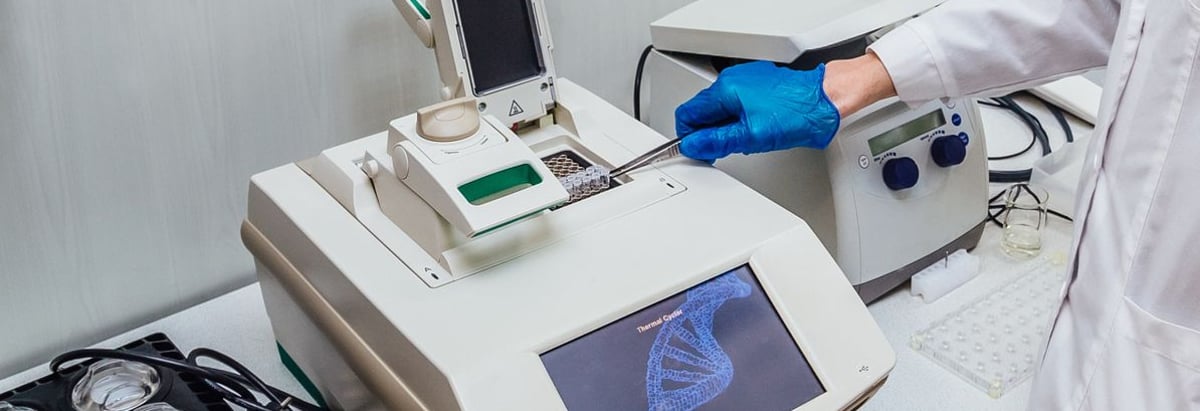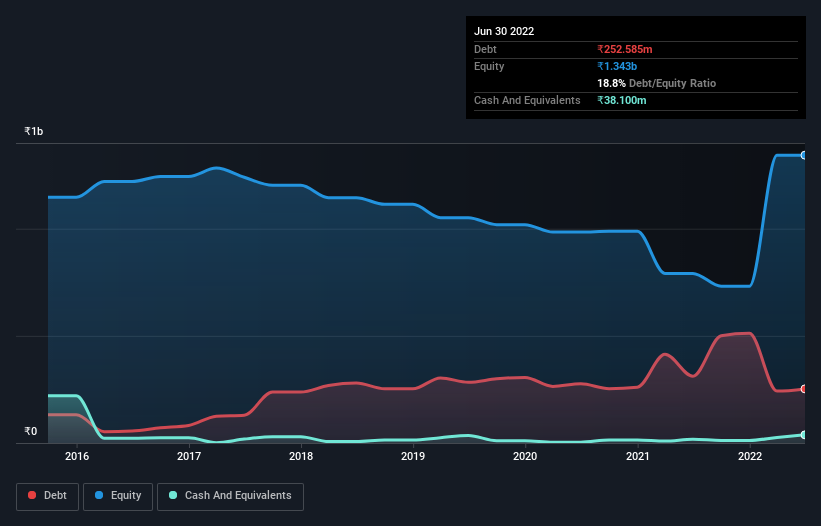
Howard Marks put it nicely when he said that, rather than worrying about share price volatility, 'The possibility of permanent loss is the risk I worry about... and every practical investor I know worries about.' It's only natural to consider a company's balance sheet when you examine how risky it is, since debt is often involved when a business collapses. Importantly, Brooks Laboratories Limited (NSE:BROOKS) does carry debt. But the more important question is: how much risk is that debt creating?
When Is Debt A Problem?
Debt assists a business until the business has trouble paying it off, either with new capital or with free cash flow. If things get really bad, the lenders can take control of the business. However, a more frequent (but still costly) occurrence is where a company must issue shares at bargain-basement prices, permanently diluting shareholders, just to shore up its balance sheet. Of course, debt can be an important tool in businesses, particularly capital heavy businesses. The first step when considering a company's debt levels is to consider its cash and debt together.
See our latest analysis for Brooks Laboratories
What Is Brooks Laboratories's Net Debt?
As you can see below, Brooks Laboratories had ₹252.6m of debt at March 2022, down from ₹311.5m a year prior. However, because it has a cash reserve of ₹38.1m, its net debt is less, at about ₹214.5m.

How Healthy Is Brooks Laboratories' Balance Sheet?
According to the last reported balance sheet, Brooks Laboratories had liabilities of ₹488.8m due within 12 months, and liabilities of ₹127.1m due beyond 12 months. Offsetting these obligations, it had cash of ₹38.1m as well as receivables valued at ₹190.3m due within 12 months. So its liabilities outweigh the sum of its cash and (near-term) receivables by ₹387.5m.
Of course, Brooks Laboratories has a market capitalization of ₹2.68b, so these liabilities are probably manageable. However, we do think it is worth keeping an eye on its balance sheet strength, as it may change over time. The balance sheet is clearly the area to focus on when you are analysing debt. But it is Brooks Laboratories's earnings that will influence how the balance sheet holds up in the future. So if you're keen to discover more about its earnings, it might be worth checking out this graph of its long term earnings trend.
Over 12 months, Brooks Laboratories saw its revenue hold pretty steady, and it did not report positive earnings before interest and tax. While that's not too bad, we'd prefer see growth.
Caveat Emptor
Over the last twelve months Brooks Laboratories produced an earnings before interest and tax (EBIT) loss. Its EBIT loss was a whopping ₹299m. When we look at that and recall the liabilities on its balance sheet, relative to cash, it seems unwise to us for the company to have any debt. Quite frankly we think the balance sheet is far from match-fit, although it could be improved with time. Another cause for caution is that is bled ₹651m in negative free cash flow over the last twelve months. So in short it's a really risky stock. When analysing debt levels, the balance sheet is the obvious place to start. However, not all investment risk resides within the balance sheet - far from it. To that end, you should learn about the 3 warning signs we've spotted with Brooks Laboratories (including 2 which are a bit concerning) .
At the end of the day, it's often better to focus on companies that are free from net debt. You can access our special list of such companies (all with a track record of profit growth). It's free.
Valuation is complex, but we're here to simplify it.
Discover if Brooks Laboratories might be undervalued or overvalued with our detailed analysis, featuring fair value estimates, potential risks, dividends, insider trades, and its financial condition.
Access Free AnalysisHave feedback on this article? Concerned about the content? Get in touch with us directly. Alternatively, email editorial-team (at) simplywallst.com.
This article by Simply Wall St is general in nature. We provide commentary based on historical data and analyst forecasts only using an unbiased methodology and our articles are not intended to be financial advice. It does not constitute a recommendation to buy or sell any stock, and does not take account of your objectives, or your financial situation. We aim to bring you long-term focused analysis driven by fundamental data. Note that our analysis may not factor in the latest price-sensitive company announcements or qualitative material. Simply Wall St has no position in any stocks mentioned.
About NSEI:BROOKS
Brooks Laboratories
Manufactures and sells pharmaceuticals in India and internationally.
Flawless balance sheet very low.
Market Insights
Community Narratives



